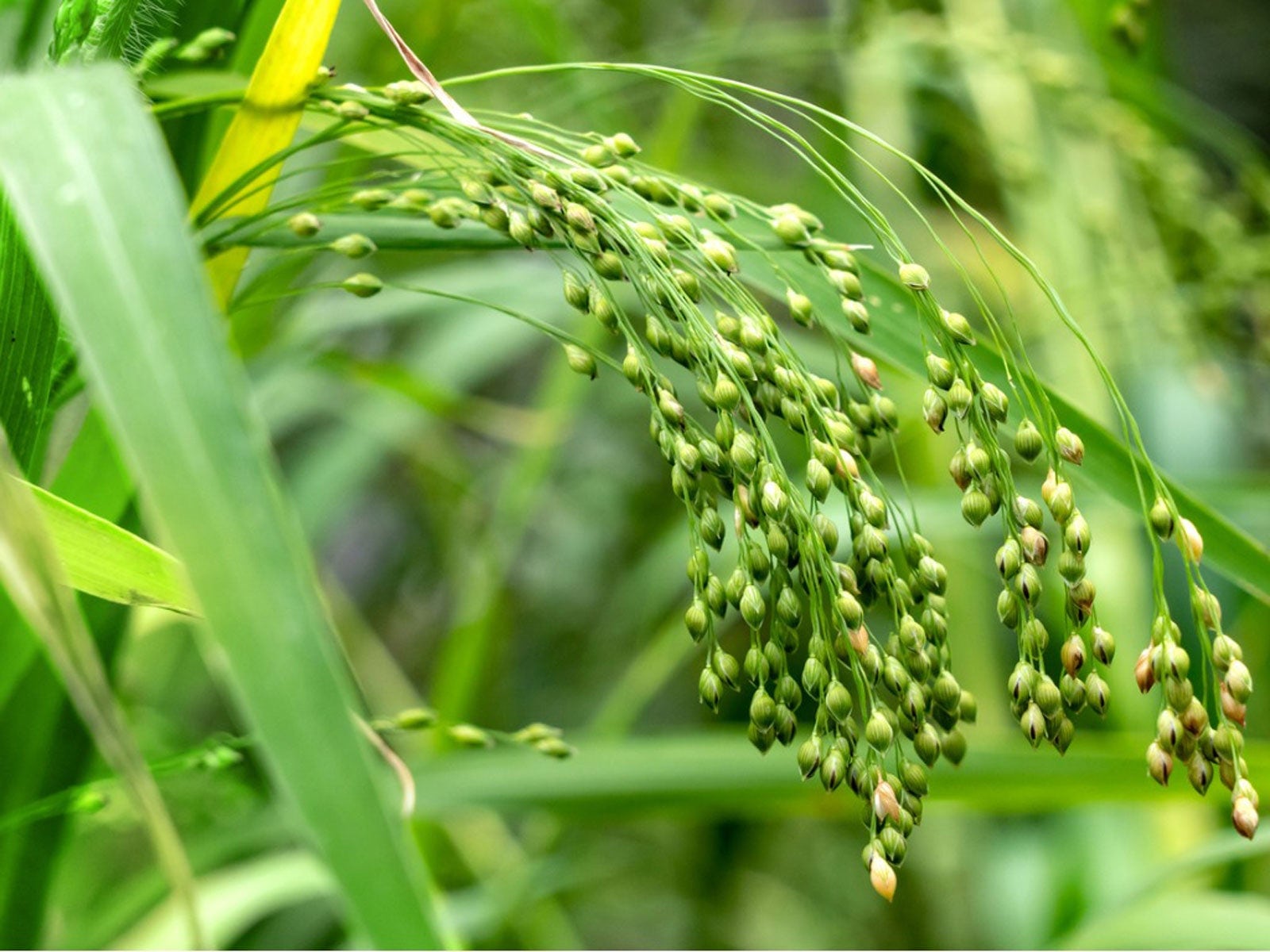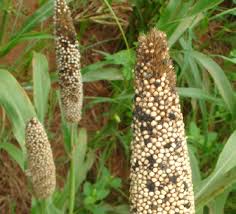


Proso millet (Panicum miliaceum L.) is one of the oldest and most important minor millets in India. It is widely grown in various parts of India, Asia, Middle Eastern countries, and Western Europe. Being drought-resistant, it thrives in areas with limited rainfall. Proso millet can be cultivated in both nutrient-rich and poor soils.


Millets are nutritionally superior as their grains contain high amount of proteins, essential amino acids, minerals, and vitamins.

| Particulars | 2023-24 |
|---|---|
| Area, (Lakh ha) | 121.88 |
| Production (Lakh Tones) | 153.79 |
Source: DA&FW (Data Upload) (State wise millet production pdf)

Foxtail millet is a tropical and subtropical climate crop and can be grown at an altitude of 2100 m above MSL. A mean temperature of 26-29°C during the growth is found optimum. Foxtail millet, grown in semi-arid regions, has a low water requirement and is successful almost entirely to its short growing season.

It can be grown on a wide range of soils from very poor to highly fertile and can tolerate a certain degree of alkalinity. Best soils are alluvial, loamy and sandy loam soil with good drainage.

Variety: PMV 442 (GPUP 25) is a suitable variety for planting in Assam.

Prepare the field by performing 3 or 4 ploughings followed by one laddering to obtain fine tilth.
July-August is suitable for planting proso millet. It can also be planted in January-February.
Variety: PMV 442 (GPUP 25) is a suitable variety for planting in Assam.
Direct-sowing: Generally, tractor-drawn or bullock-drawn seed drills, as well as bullock ploughs, are employed for sowing.
A seed rate of 8-10 kg/ha and 15 kg/ha for broadcast sowing.
Treat the seed with Propiconazole @1ml/kg.
Sowing is manually carried out at the centre of ridges where small furrows have been created by a tractor for sowing. These furrows are then covered with soil (sowing depth of 2 to 3 cm). Subsequently, laddering should be conducted along the furrows to ensure proper soil coverage over the seeds. This practice enhances germination, tillering, and minimizes crop lodging. The recommended spacing is 25 cm between rows and 8-10 cm between plants.
Apply Farmyard Manure (FYM) or Compost at a rate of 5 tons per hectare or 6 quintals per bigha. Nutrient requirements are as follows:
| Nutrient | Requirement (kg/ha) | Form | Fertilizer Requirement (kg/ha) | Fertilizer Requirement (kg/bigha) |
|---|---|---|---|---|
| N | 40 | Urea | 88 | 12.00 |
| P2O5 | 20 | SSP | 125 | 16.50 |
| K2O | 20 | MOP | 32 | 4.25 |
Apply 50% of the full doses of FYM, P2O5, and K2O as basal fertilizer, and the remaining 50% of nitrogen (N) should be top-dressed 30 days after transplanting.
The number of required irrigations varies based on factors such as soil type, weather conditions, and the duration of the variety. Typically, 2-4 irrigations are necessary.
For line sowing, conduct two intercultivations and one round of hand weeding. In the case of broadcasted crops, perform two rounds of hand weeding.

The grain loss caused by the disease varies from 8-50 per cent of the grain yield. The fungus affects most of the grains in an ear, producing sori. The sori are pale greyish in colour. When the crop matures, the sori rupture and produce a dark powdery mass of spores.

The maggot, upon hatching, migrates to the upper surface of the leaf and enters between the leaf sheath and stem. After reaching the soil level, the maggot bores inside the stem and cuts the growing point, resulting in a "dead heart" symptom. The infested plant produces side tillers. The attack is more severe during summer than the kharif season.


Jorhat, PIN - 785013 Assam